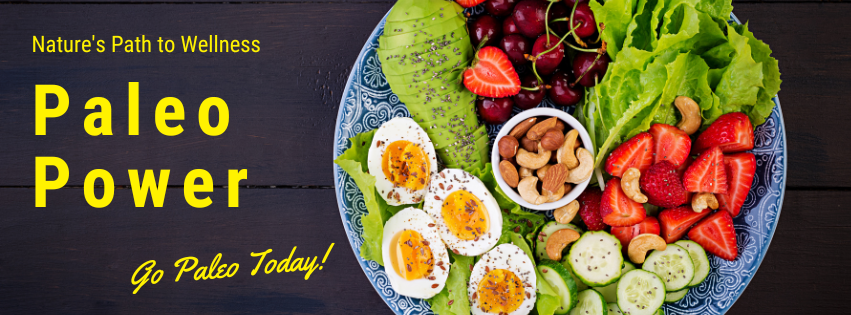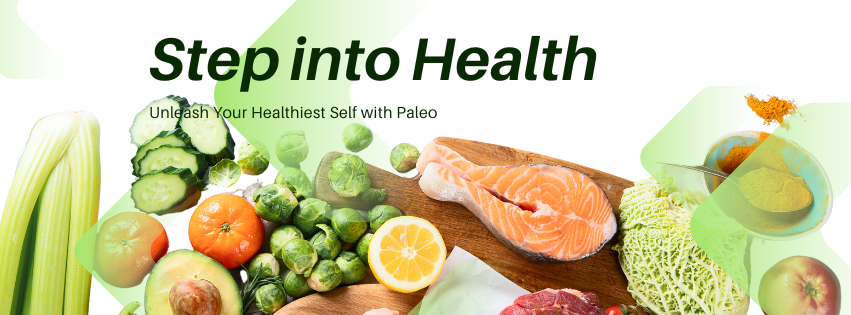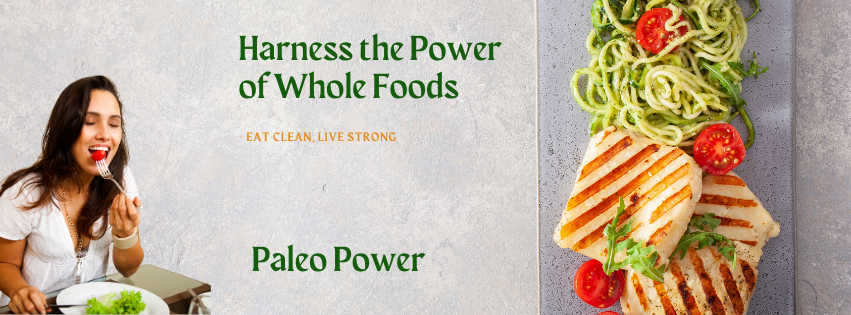In a world filled with quick fixes and fad diets, finding a natural, sustainable approach to health and fitness can feel like searching for a needle in a haystack.
Enter the Paleo diet—a lifestyle that taps into the dietary habits of our ancestors to promote health, vitality, and weight loss. If you’re ready to get fit naturally, it’s time to start living Paleo!
This comprehensive guide will show you how to embrace this transformative lifestyle, providing you with all the tools, tips, and information you need to succeed.

Understanding the Paleo Diet: A Return to Our Roots
What Does “Going Paleo” Mean?
The Paleo diet, also known as the Paleolithic or “caveman” diet, focuses on consuming foods that our ancestors would have eaten thousands of years ago. This means a diet rich in whole, unprocessed foods like meat, fish, vegetables, fruits, nuts, and seeds while avoiding processed foods, grains, dairy, and legumes.
The Principles of the Paleo Diet
The foundation of the Paleo diet is simple: eat whole, natural foods that fuel your body and avoid anything that has been processed or refined. The idea is to mimic the eating habits of our ancestors, who were hunter-gatherers and had no access to modern agricultural products.
Why Choose Paleo?
By focusing on natural, nutrient-dense foods, the Paleo diet can help improve digestion, boost energy levels, support weight loss, and reduce inflammation. It’s a return to a simpler, more intuitive way of eating that aligns with our biological needs.
Comparing Diets: Paleo vs. Keto, Vegan, and Atkins
Paleo vs. Keto
Both Paleo and Keto emphasize whole foods and healthy fats, but the Keto diet requires strict macronutrient ratios to induce ketosis. Keto is low-carb, high-fat, and moderate protein, while Paleo is more flexible and focuses on overall food quality.
Paleo vs. Vegan
The Paleo and Vegan diets differ significantly: Paleo includes animal products, whereas Veganism excludes all animal-derived foods. Both diets emphasize plant-based foods, but they approach nutrition from different philosophical and nutritional standpoints.
Paleo vs. Atkins
Atkins is a low-carb diet that gradually reintroduces carbs, while Paleo eliminates processed foods and grains entirely. Atkins focuses on weight loss through carbohydrate restriction, while Paleo promotes overall health and wellness through nutrient-dense foods.
Developing Healthy Habits with Paleo
Starting Your Paleo Journey
Transitioning to a Paleo lifestyle can be overwhelming, but starting with small, manageable steps can make the process easier. Begin by gradually eliminating processed foods and introducing more whole, natural foods into your diet.
Building a Balanced Paleo Plate
A balanced Paleo plate typically includes a variety of vegetables, a source of protein (meat, fish, or eggs), healthy fats (avocado, olive oil, nuts), and a small portion of fruits. This approach ensures you get all the necessary nutrients for optimal health.
Staying Consistent
Consistency is key to reaping the benefits of the Paleo diet. Plan your meals, keep Paleo-friendly snacks on hand, and find a supportive community or accountability partner to stay motivated and on track.
The Role of Accountability in Going Paleo
Finding Support
Whether it’s joining a Paleo group online or finding a buddy to share the journey with, having support can make a significant difference. Sharing experiences, recipes, and challenges helps you stay committed.
Tracking Your Progress
Keep a journal of your meals, how you feel, and any changes you notice in your health. Tracking your progress can provide insights and motivation as you see how your body responds to the Paleo lifestyle.
Setting Realistic Goals
Set achievable goals for yourself, such as cooking a certain number of Paleo meals per week or trying a new Paleo recipe. Celebrate your successes, no matter how small, to stay motivated.
Proven Tips and Tricks for Success with Paleo
Meal Planning and Prep
Plan your meals ahead of time to ensure you always have Paleo-friendly options available. Spend a few hours each week prepping ingredients or cooking meals in advance to save time and reduce the temptation to stray from your diet.
Navigating Social Situations
Eating out or attending social events can be challenging when you’re following the Paleo diet. Research restaurant menus in advance, bring your own Paleo-friendly dish to gatherings, and don’t be afraid to explain your dietary choices to friends and family.
Dealing with Cravings
Cravings for non-Paleo foods are natural, especially in the beginning. Combat cravings by having healthy snacks on hand, staying hydrated, and reminding yourself of the benefits of sticking to your Paleo diet.
Delicious Paleo Recipes to Get You Started
Breakfast Ideas
- Paleo Pancakes: Made with almond flour and topped with fresh berries.
- Egg Muffins: Packed with veggies and protein, perfect for a quick breakfast.
Lunch and Dinner Ideas
- Grilled Chicken Salad: With avocado, mixed greens, and a homemade vinaigrette.
- Zucchini Noodles with Pesto: A light and flavorful dish that’s easy to prepare.
Snack Ideas
- Trail Mix: A combination of nuts, seeds, and dried fruit.
- Vegetable Sticks with Guacamole: A satisfying and nutrient-dense snack.
The Health Benefits of Living Paleo
Improved Digestion
By eliminating processed foods and grains, the Paleo diet can improve digestive health, reducing issues like bloating, gas, and indigestion.
Enhanced Energy Levels
Many people report increased energy levels when following the Paleo diet. This is likely due to the nutrient-dense foods that provide sustained energy throughout the day.
Weight Loss and Muscle Tone
The Paleo diet’s emphasis on whole foods and healthy fats can support weight loss and help build and maintain lean muscle mass. Combined with regular exercise, Paleo can help you achieve your fitness goals.
Reduced Inflammation
By avoiding inflammatory foods like processed sugars and refined carbs, the Paleo diet can help reduce inflammation in the body, leading to better overall health and reduced risk of chronic diseases.
Practical Guidelines for Weight Loss with Paleo
Focus on Quality, Not Quantity
Instead of counting calories, focus on the quality of your food. Choose organic, grass-fed, and pasture-raised options whenever possible to ensure you’re getting the most nutrient-dense foods.
Stay Active
Combine your Paleo diet with regular physical activity for optimal results. Whether it’s walking, running, or weightlifting, find an exercise routine that you enjoy and can stick to.
Stay Hydrated
Proper hydration is essential for overall health and can support your weight loss efforts. Drink plenty of water throughout the day and limit sugary beverages.

Avoiding Common Beginner Mistakes
Going Too Strict Too Soon
Transitioning to the Paleo diet doesn’t have to be all-or-nothing. Gradually eliminate non-Paleo foods from your diet to avoid feeling overwhelmed or deprived.
Ignoring Your Body
Listen to your body and make adjustments as needed. If you’re feeling tired or unwell, it might be a sign that you need to tweak your diet or seek professional guidance.
Not Planning Ahead
Failing to plan is planning to fail. Always have a plan for your meals and snacks to avoid reaching for unhealthy options when you’re hungry.
Asanas: Yoga Postures to Complement Your Paleo Diet
Warrior Pose (Virabhadrasana)
This pose strengthens the legs and core, promoting balance and stability.
Downward-Facing Dog (Adho Mukha Svanasana)
A great stretch for the entire body, improving flexibility and circulation.
Child’s Pose (Balasana)
A restful pose that helps reduce stress and calm the mind.
Nutrition Ideas to Drop Fat with Paleo
Emphasize Protein
Protein is crucial for building muscle and keeping you full. Include a source of protein in every meal, such as eggs, meat, or fish.
Healthy Fats are Your Friend
Don’t shy away from fats. Healthy fats like avocado, nuts, and olive oil provide essential nutrients and keep you satisfied.
Load Up on Veggies
Vegetables are low in calories but high in vitamins, minerals, and fiber. Make them a central part of your meals.
Conclusion: Don’t Procrastinate, Start Paleo Today!
The benefits of the Paleo diet extend far beyond weight loss. It’s a holistic approach to health that can improve digestion, boost energy, and enhance overall well-being. By focusing on whole, natural foods and adopting a mindful approach to eating, you can achieve your fitness and health goals in a sustainable way.

Ready to transform your health and fitness naturally?
Don’t wait any longer!
Click here to access our step-by-step guide, “Are You Ready to Get Fit, Naturally”?
It’s About “Time for You to Start Living Paleo!” Learn everything you need to know to embrace the Paleo lifestyle and start seeing results today.
Your journey to optimal health and fitness begins now!
The Natural Choice for a Better You!

